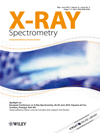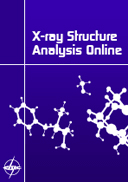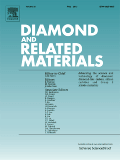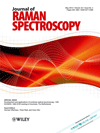
X-RAY SPECTROMETRY
metrics 2024
Pioneering research in X-ray applications across disciplines.
Introduction
X-RAY SPECTROMETRY is a distinguished journal published by Wiley that focuses on the advancements and applications of X-ray spectroscopic techniques in various scientific fields. Established in 1972, the journal has become a prominent platform for researchers and professionals, promoting the exchange of innovative ideas and thorough investigations in spectroscopy, particularly within the realm of chemistry. With an ISSN of 0049-8246 and an E-ISSN of 1097-4539, it maintains strong visibility in academic circles. The journal currently holds a Q3 ranking in Spectroscopy, positioned at rank #52 out of 76 in the Chemistry category according to Scopus metrics, reflecting its solid standing in the field despite its percentile of 32. While X-RAY SPECTROMETRY is not an Open Access journal, it offers valuable insights and contributions from various researchers, ensuring a rich resource for those invested in the study of spectrometric applications and innovations. Researchers, students, and professionals alike will find it an essential addition to their academic library, aiding in the advancement of knowledge in spectroscopy.
Metrics 2024
 0.27
0.27 1.50
1.50 1.20
1.20 51
51Metrics History
Rank 2024
Scopus
IF (Web Of Science)
JCI (Web Of Science)
Quartile History
Similar Journals

CRYSTALLOGRAPHY REPORTS
Fostering Insights in Chemistry and PhysicsCRYSTALLOGRAPHY REPORTS (ISSN: 1063-7745, E-ISSN: 1562-689X), published by PLEIADES PUBLISHING INC, is a pivotal journal in the fields of chemistry, condensed matter physics, and materials science. Established in 1996 and continuing through to 2024, it serves as a vital resource for researchers and professionals seeking to disseminate and engage with contemporary advancements in crystallography. While currently not classified as open access, the journal's rigorous peer-review process ensures the publication of high-quality research, making it a respected entity within the academic community. With a categorization in the Q4 quartile for its respective fields and notable Scopus rankings, CRYSTALLOGRAPHY REPORTS is committed to fostering an understanding of crystallographic techniques and their application across scientific disciplines. This journal is essential for those looking to stay abreast of the latest findings and methodologies in crystallography, providing a platform for impactful discussions and collaborations.

ATOMIC SPECTROSCOPY
Exploring Innovations in Molecular Analysis.ATOMIC SPECTROSCOPY is a distinguished journal specializing in the field of spectroscopy and published by ATOMIC SPECTROSCOPY PRESS LTD. With ISSN 0195-5373 and e-ISSN 2708-521X, this journal has been a cornerstone in advancing the discipline since its inception, thriving in its relevant domain for over four decades, covering converged research years from 1980 to 1989 and from 1996 to 2024. Currently holding a Category Quartile of Q2 in Spectroscopy for 2023, ATOMIC SPECTROSCOPY ranks 34th among 76 in its field according to Scopus, placing it in the 55th percentile, thereby affirming its critical role as a resource for researchers, professionals, and students alike. This journal serves as a platform for disseminating innovative research, methodological advancements, and breakthroughs in atomic and molecular spectroscopy, fostering a comprehensive understanding that is essential for progress in analytical chemistry and related disciplines. While it operates under a non-open access model, the journal ensures broad reach and visibility within the academic community. For those passionate about spectroscopy, ATOMIC SPECTROSCOPY remains an invaluable resource for staying updated on the latest developments, contributing to its reputation as a leading journal in the field.

X-Ray Structure Analysis Online
Unlocking the Secrets of Material StructuresX-Ray Structure Analysis Online is a pivotal academic journal dedicated to the field of analytical and materials chemistry, published by the Japan Society for Analytical Chemistry. Established in 2009, this journal serves as a vital platform for researchers and professionals dedicated to advancing the understanding of X-ray structural analysis techniques and their applications. With ISSN 1883-3578, it operates under rigorous peer-review standards, promoting high-quality research contributions. While the journal is currently categorized in the Q4 quartile for both Analytical Chemistry and Materials Chemistry, its focus on cultivating a deeper understanding of material properties through X-ray analysis remains crucial for ongoing developments in these fields. By providing an accessible outlet for innovative studies, X-Ray Structure Analysis Online supports the academic community in overcoming the challenges of a rapidly evolving scientific landscape. It is particularly valuable for those engaged in material and analytical research, offering insights that contribute to both theoretical foundations and practical applications.

MRS Advances
Advancing the Frontiers of Materials ScienceMRS Advances, published by Springer Heidelberg, is an esteemed academic journal that serves as a vital platform for disseminating cutting-edge research in the fields of condensed matter physics, materials science, and mechanical engineering. With an ISSN of 2731-5894 and an E-ISSN of 2059-8521, the journal is hosted in Switzerland and encompasses an impressive spectrum of innovative studies that impact both theoretical and practical applications. Throughout its converged years from 2012 and continuing through 2024, MRS Advances has established itself with notable rankings, including Q4 in condensed matter physics and Q3 in several related categories. This journal not only enriches the academic community with its rigorous peer-reviewed articles, but also encourages open discussions that further advance research innovations. Although currently not designated as an open-access journal, its accessibility through institutional subscriptions ensures that professionals, researchers, and students can engage with the latest advancements in the material science arena. Emphasizing its relevance, MRS Advances is dedicated to fostering interdisciplinary collaboration and inspiring new discoveries within the global research community.

DIAMOND AND RELATED MATERIALS
Connecting theory with application in diamond research.DIAMOND AND RELATED MATERIALS, published by Elsevier Science SA, serves as a premier international platform for the dissemination of high-quality research in the fields of materials science, electrical engineering, and chemistry, with a specialized focus on diamond and its related materials. With an ISSN of 0925-9635 and an E-ISSN of 1879-0062, this journal has established itself within the top quartiles, reflecting its influential contribution to the scientific community, particularly in the categories of Chemistry (miscellaneous) and Electrical Engineering, among others. The journal's wide scope encompasses both theoretical and applied aspects of diamond research, making it an essential resource for professionals and academics alike. The current rankings position it favorably within its respective disciplines, with a notable 79th percentile in General Physics and Astronomy and strong standings in related categories. Although it does not offer open access, researchers can stay informed of cutting-edge advancements and methodologies through its comprehensive articles and reviews, enriching the wider discourse in advanced materials research.

JOURNAL OF RAMAN SPECTROSCOPY
Exploring the depths of materials analysis with Raman techniques.JOURNAL OF RAMAN SPECTROSCOPY, published by WILEY, is a leading journal dedicated to advancing the field of Raman spectroscopy and its applications across diverse scientific disciplines. With an impact factor reflective of its esteemed reputation, this journal positions itself in the Q2 category for both Materials Science and Spectroscopy in the 2023 rankings, demonstrating its relevance and contribution to these fields. Since its inception in 1973, it has consistently provided a platform for innovative research, offering valuable insights and methodologies to researchers, professionals, and students alike. The journal caters to a global audience and includes peer-reviewed articles that encapsulate groundbreaking findings and evolving trends in spectroscopy, enriching our understanding and implementation of this vital analytical technique. While it does not offer Open Access options, its content is accessible through institutional subscriptions, ensuring broad dissemination in the scientific community. By bridging theoretical knowledge and practical applications, the JOURNAL OF RAMAN SPECTROSCOPY plays a pivotal role in shaping the future of materials analysis and characterization.

APPLIED SPECTROSCOPY
Empowering Discoveries in Instrumentation and ApplicationsApplied Spectroscopy, published by SAGE Publications Inc, is a leading journal in the field of spectroscopy and instrumentation, with a legacy dating back to 1970. This esteemed journal, recognized within the Q2 category for both Instrumentation and Spectroscopy in 2023, provides critical insights and advancements that cater to a wide audience of researchers, professionals, and students. With its Scopus rankings placing it in the top 20% of publications in its respective fields, Applied Spectroscopy stands out for its rigorous peer-reviewed content that drives innovation in analytical techniques and applications. Though not an open-access publication, readers can access a wealth of research articles, reviews, and experimental findings that enrich the scientific discourse in spectroscopy. With a focus on enhancing the understanding and practical applications of spectroscopy, this journal is an essential resource for anyone engaged in this dynamic and evolving discipline.

Molbank is an open-access journal published by MDPI, dedicated to the fields of Biochemistry, Organic Chemistry, and Physical and Theoretical Chemistry. Established in 2002, this journal has served as a vital platform for the dissemination of research findings, where researchers and professionals share original articles focusing on molecular chemistry, synthesis, and related studies. With a commitment to open access, Molbank enables global access to scientific knowledge, fostering collaboration and innovation among scientists. While currently categorized in the fourth quartile for its field rankings, it provides a unique opportunity for emerging scholars to contribute to and engage with the scientific community. The journal is based in Switzerland, operating from its office at ST ALBAN-ANLAGE 66, CH-4052 BASEL, SWITZERLAND, and continues to attract submissions until 2024. Researchers, students, and professionals looking to expand their knowledge and participate in the dialogue of current molecular chemistry can benefit significantly from engaging with the content published in Molbank.

Nanoscale Research Letters
Bridging science and application at the nanoscale.Nanoscale Research Letters, published by SPRINGER, is a leading open-access journal dedicated to the rapid dissemination of innovative research in the field of nanoscience and nanotechnology. Established in 2006, this journal provides researchers and professionals with a platform to share their groundbreaking findings across a broad spectrum of applications, including condensed matter physics and materials science. With an impressive Q1 ranking in both Condensed Matter Physics and Materials Science categories as of 2023, it asserts its position as a top-tier publication within the scientific community, bolstered by a 96th percentile rank in the Scopus database. Nanoscale Research Letters not only emphasizes the importance of nanotechnology research but also ensures that its findings are widely accessible, adhering to its open-access mandate. Scholars and students alike are encouraged to contribute to and engage with this dynamic resource, fostering collaboration and innovation in the ever-evolving world of nanoscience.

Microporous and Mesoporous Materials
Shaping the Future of Materials ScienceMicroporous and Mesoporous Materials is a leading academic journal published by ELSEVIER, specializing in the field of porosity characterization and applications of microporous and mesoporous materials. With an impactful Q1 ranking in various categories, including Chemistry, Condensed Matter Physics, and Materials Science, this journal serves as a vital resource for researchers, professionals, and students focused on advancing the understanding and application of these materials. Established in 1998 and set to continue its influence until 2024, the journal's rigorous peer-review process ensures the dissemination of high-quality research findings. Additionally, its commitment to open access publishing broadens accessibility, fostering an inclusive community dedicated to innovation in nanoscience, materials physics, and engineering. The journal's Scopus rankings highlight its prestigious standing, placing it among the top percentile within pertinent fields. For those engaged in cutting-edge research or education within these sectors, Microporous and Mesoporous Materials remains an essential journal for current advancements and insights.